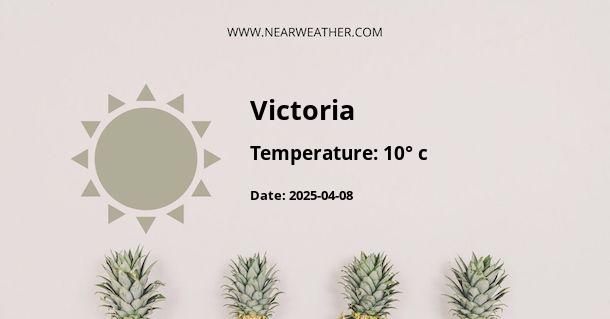Climate and Weather in Victoria, Australia
Victoria, located in the southeastern part of Australia, experiences a diverse climate and a range of weather conditions throughout the year. From the coastal regions to the mountainous areas, Victoria showcases a variety of climates that make it an attractive destination for tourists and residents alike. Let's explore the climate and weather patterns in Victoria throughout the year.
Temperature and Seasons
Victoria experiences four distinct seasons: summer, autumn, winter, and spring. The temperature variations can be quite significant across these seasons.
In summer (December to February), the coastal regions of Victoria enjoy warm and pleasant temperatures, with average highs ranging from 25 to 30 degrees Celsius (77 to 86 degrees Fahrenheit). However, the state's inland areas can experience higher temperatures, occasionally exceeding 40 degrees Celsius (104 degrees Fahrenheit). The summer season is relatively dry, with occasional heatwaves and the possibility of bushfires.
Autumn (March to May) brings milder temperatures to Victoria, with average highs ranging from 17 to 23 degrees Celsius (63 to 73 degrees Fahrenheit). The weather is generally more stable during this season, with fewer extremes in temperature. Autumn is an excellent time to visit Victoria as the landscapes transform with vibrant autumn foliage.
Winter (June to August) is the coldest season in Victoria, with average highs ranging from 11 to 14 degrees Celsius (52 to 57 degrees Fahrenheit). The coastal regions experience milder winters compared to the inland areas. Snowfall is common in the mountainous regions, such as the Victorian Alps, offering opportunities for winter sports enthusiasts. Rainfall is also more frequent during this season.
Spring (September to November) brings a return to milder temperatures, with average highs ranging from 16 to 21 degrees Celsius (61 to 70 degrees Fahrenheit). Spring in Victoria is known for its beautiful blooming flowers and lush green landscapes. However, the weather can be changeable during this season, with both warm and cool days.
Rainfall and Precipitation
Victoria generally has a moderate annual rainfall, with variations across different regions. The coastal areas receive higher rainfall compared to the inland regions.
The wettest months in Victoria are typically during the winter and spring seasons, with June being the wettest month on average. The rainfall during these months contributes to the state's lush greenery and supports its agricultural industry.
The central highlands and mountainous areas, such as the Grampians and the Victorian Alps, receive more significant precipitation, often in the form of snow during the winter months. These regions are popular among skiers and snowboarders.
Coastal Climate
The coastal regions of Victoria have a maritime climate, influenced by the proximity to the Southern Ocean. This results in cooler summers and milder winters compared to the inland areas.
The coastal areas experience sea breezes during summer, providing relief from the heat. However, strong winds and occasional storms can also occur along the coast, particularly during the winter months.
Inland Climate and Microclimates
The inland regions of Victoria, away from the moderating influence of the ocean, experience more significant temperature variations and distinct microclimates.
The northwest and western parts of the state, such as the Mallee and Wimmera regions, have a semi-arid climate with hot, dry summers and relatively mild winters. These regions are known for their agricultural activities, particularly grain production.
The northeastern part of Victoria, including the Victorian Alps and the High Country, experiences cooler temperatures due to the higher elevation. This region is popular for outdoor activities including hiking, camping, and skiing.
Climate Change and Future Projections
Like many other parts of the world, Victoria is also experiencing the impacts of climate change. The state has seen an increase in average temperatures over the past century, with more frequent and intense heatwaves.
Climate models project that Victoria will continue to experience rising temperatures and changes in rainfall patterns in the future. This could lead to increased risks of bushfires, heat-related health issues, and impacts on agriculture and natural ecosystems.
Conclusion
Victoria's climate and weather offer a diverse range of experiences throughout the year. From the warm summers along the coast to the snowy winters in the mountainous regions, Victoria has something for everyone. Whether you are a nature lover, outdoor enthusiast, or simply enjoy the changing seasons, Victoria's climate provides a unique and captivating experience.
A - Victoria's Latitude is -37.000000 & Longitude is 145.000000.
A - Weather in Victoria is 24° today.
A - Climate Conditions in Victoria shows overcast clouds today.
A - Humidity in Victoria is 39% today.
A - Wind speed in Victoria is 15.88 km/h, flowing at 351° wind direction. today.
